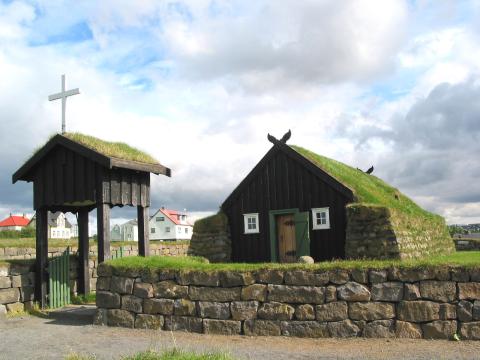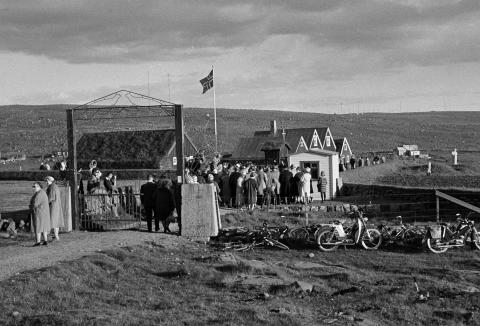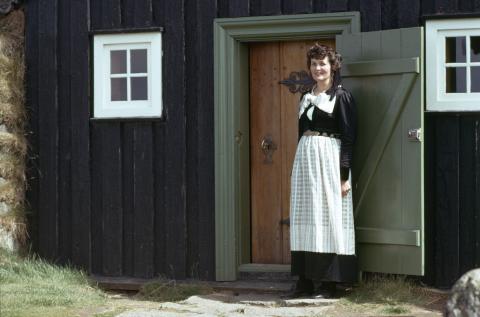
The Árbær church, consecrated in 1961, is made from timber sourced from the old baðstofa (living room/sleeping chamber), at Silfrastaðir farmhouse in Skagafjörður. The wood from Silfrastaðir had been previously salvaged from an old turf church built in the same area in 1842: it was one of the last of its kind constructed in Iceland. When it was replaced by a new church in 1896, it was demolished and rebuilt as the baðstofa. Church artefacts include the original pulpit from the old church, an altarpiece from 1720, and an antique church chandelier. The church is now a popular place for ceremonies, especially weddings.


There are two churches in Skagafjörður, Grafarkirkja on Höfðaströnd and Víðimýrarkirkja. Jón Samsonarson built Víðimýrarkirkja, but he also constructed the old church in Silfrastaðir. This church was erected in 1842 and had two partitions between the choir and the nave, a standard design at the time. It was decided to have only one partition during the reconstruction at Árbær Open Air Museum. Wealthy farmers, the church farmer, the parish clerk and the sheriff all had seats in the choir, alongside other respected farmers. Between the choir and the nave was the second partition, where the farmers' wives sat. Other congregation members sat in the nave, and as was the custom, men sat on the south side of the church and women on the north side.
The church, which the local farmers managed, was dismantled in 1895, but it had started to fall into disrepair by then. A new church was erected, and it is one of only two octagonal churches in Iceland, with the other in Auðkúla in Húnaþing. Þorsteinn Sigurðsson built both churches. The old church's timber was used to construct a new baðstofa (living room and bedroom in old farmhouses) at Silfrastaðir. The baðstofa was somewhat smaller than the church. The pulpit got a new purpose, becoming a pantry. The baðstofa was inhabited until 1954, when the residents moved to a new house. It stood until 1959 when the wood was donated to Árbær Open Air Museum. Skúli Helgason demolished the baðstofa and rebuilt it as a church in the museum. The bishop of Iceland consecrated the new church in 1961.
Much of the timber had rotted and was of little use, but the framework was mostly intact. Skúli added bays so that the church would become as long as it had once been before. Additionally, he carved out a rake to decorate the church, modelled after a rake preserved at the National Museum of Iceland. He also built new pews modelled after one preserved from the old church. The pulpit has been renovated and now serves its old purpose again.
Among the artefacts in the church is a chandelier that was previously displayed in the Reykjavík Cathedral. The altarpiece, dating from 1720, is on loan from the National Museum.

